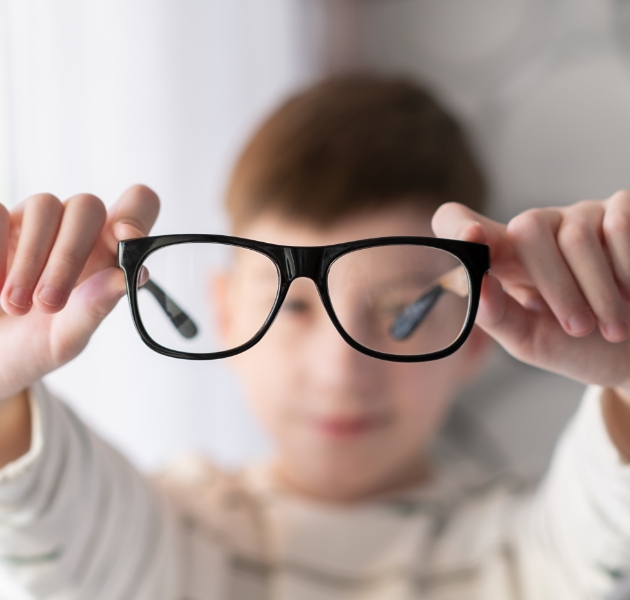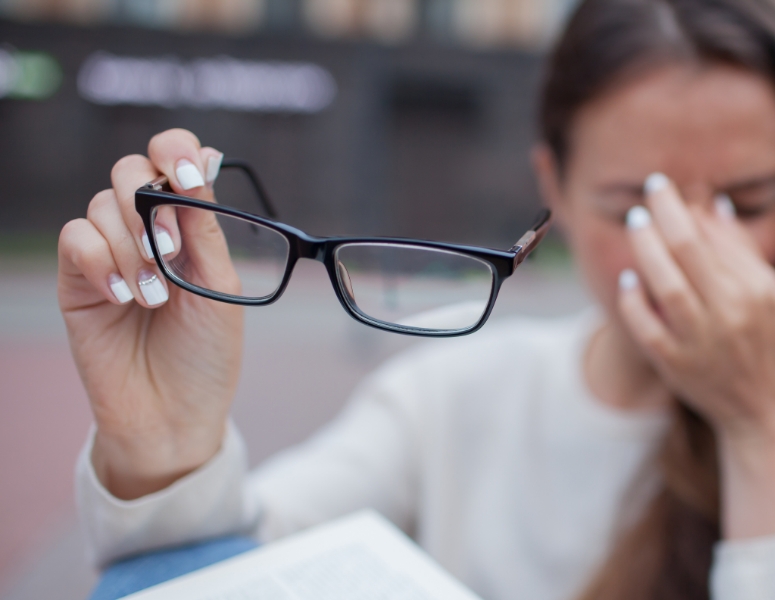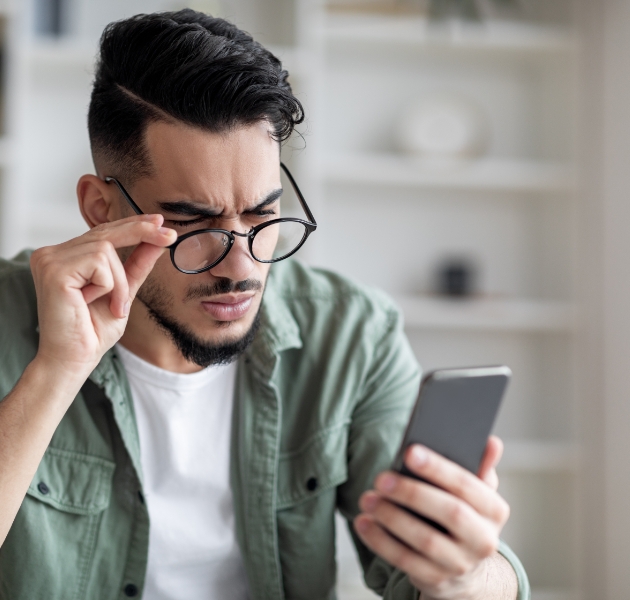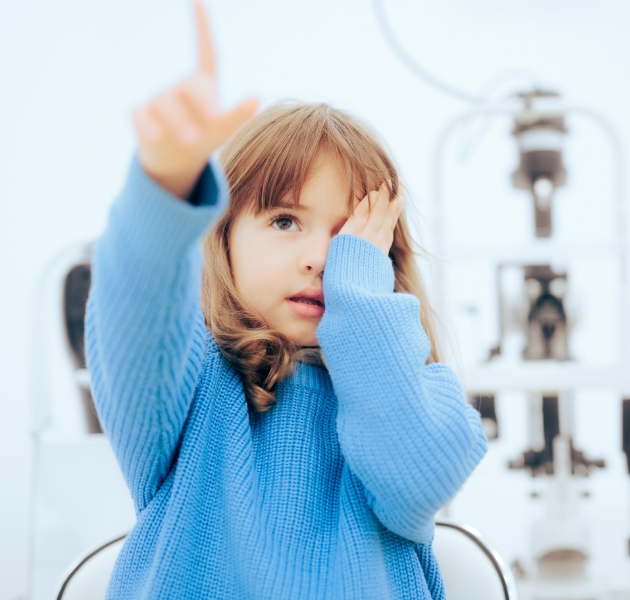Myopia Management
Myopia is the most common eye condition worldwide and is the leading cause of visual impairment in children. It is predicted by 2050, half of the global population will be affected by myopia.
What is Myopia?
Myopia (also called short-sightedness or near-sightedness) is a condition that causes people to have problems seeing clearly in the distance. Myopia is due to the eyeball being longer than normal or the cornea being too curved, causing the imaged to be focused in front of the retina rather than on the retina. Distance vision is then blurred, but near vision is usually clear (but not always perfect).
Book a Consultation

What’s wrong with being short-sighted?
- STEP 1
- STEP 2
- STEP 3

The short-sightedness keeps increasing to moderate or high levels
Sometimes myopia stops changing at a low level, but unfortunately for many children and teenagers, the short-sightedness keeps increasing to moderate or high levels, especially if there is a family history of high degrees of myopia and a child spends significant time reading or using computers and digital devices.
Children who develop short-sightedness before they reach high school are much more likely to increase to high levels of myopia.


Increased myopia means an increase in prescription strength
For many, this is often a concern due to thicker and heavier glasses lenses and a higher dependence on glasses or contact lenses. However, having myopia is much more than just the inconvenience of having to wear glasses or contact lenses to see.


Developing myopia means an increased risk of developing other complications
Even more importantly, developing myopia means an increased risk of developing other complications such as myopic macular degeneration, glaucoma, cataracts and retinal detachment. Even a low level of myopia increases the risk of these eye conditions, but the higher the myopia level, the more significant the risks become.

Multifocal spectacles or contact lenses
In the early stages of myopia development, it is possible to use blended focus or multifocal spectacle lenses to provide clear and comfortable vision for both distance and near vision. The reading power is designed to reduce their eyes’ focusing demands when doing concentrated near tasks such as study and digital device use, and help to relax their eyes’ focusing muscles.
Like multifocal glasses, multifocal soft contact lenses also offer clear vision at various focal distances. Research has shown wearing multifocal spectacles or soft contact lenses limits the progression of myopia compared to conventional single vision glasses or contact lenses.
Myopia control spectacles or contact lenses
Spectacles lenses and soft contact lenses specifically developed for myopia control.
MiSight 1 Day: Soft, daily disposable contact lens that provides clear vision, with a special optical design to help slow the speed of myopia progression. A 3 year clinical trial of the MiSight lens worn by 144 children aged 8-12 years showed effectiveness in slowing myopia progression by up to 59%.
Hoya MiyoSmart: Spectacle lenses developed by Hoya and the Hong Kong Polytechnic University featuring innovative D.I.M.S. technology. A non-invasive and easy to adapt option, with clinical trials showing a reduction of progression by an average of 60%.
Orthokeratology (Ortho-K)
Orthokeratology involves wearing special contact lenses while sleeping to gradually and gently reshape the surface of the eye, resulting in clear distance vision throughout the day without the need for glasses or contact lenses.
The effect of wearing Ortho-K lenses remains as long as the lenses continue to be worn overnight, but the therapy is completely reversible. There have been several studies demonstrating Ortho-K to be effective in reducing the rate of myopia progression by around 50%.
Atropine Eye Drops
Atropine is a medication that comes in the form of eye drops. Research has shown excellent results in reducing myopia progression, but the recommendations around which child is suitable and the concentrations and dosages of drops changes as research progresses.


WHY THE BULLSEYE CLINIC
We believe in taking a proactive approach to childhood myopia
Often conventional glasses or contact lenses are used to correct short-sightedness in children and teenagers, however, this usually results in the rate of myopia increasing over time.
We believe in taking a proactive approach to childhood myopia, providing education and practical solutions to help prevent the onset of myopia, while also offering treatment options for those who are already short-sighted to slow down myopia progression.
Book a Consultation
What causes Myopia?
-
Family History
The likelihood of children developing myopia is 1 in 3 when one parent is myopic and 1 in 2 when both parents are myopic.
-
Lifestyle
Prolonged time reading and doing near visual tasks including using digital devices and computers.
-
Environment
Insufficient time spent outdoors and reduced exposure to natural light.
-
Visual efficiency
Children who have problems with focusing (accommodation) and eye aiming (convergence) are more at risk of developing myopia and experiencing progression of myopia.
More optometry services
-
Eye Examinations
Our comprehensive eye assessments not only test what you can see but also examine your eye health and how your visual system is working as a whole.
Learn More -
Children’s Vision Care
Applying holistic pediatric and developmental optometry principles, we assess your child’s eyesight, visual development and visual skills.
Learn More -
Neurological Optometry Care
We provide neuro-optometric assessments and collaborate with other health professionals to create a strategy for those experiencing vision issues due to neurological conditions.
Learn More -
Dry Eye Clinic
Using advanced diagnostic equipment, our optometrists can identify the source of your dry eye symptoms and create a tailored treatment plan.
Learn More -
Orthokeratology
Orthokeratologyis a treatment that uses custom made rigid contact lenses to gently reshape the front surface of your eye, resulting in clear vision during the day.
Learn More -
Contact Lenses
With a range of trusted contact lens brands to choose from, our optometrists can help you find the best contact lens option for your prescription and lifestyle.
Learn More



Ready to Book an Appointment?
Our experienced and friendly team are ready to help you and answer any questions you might have.
Book a Consultation


